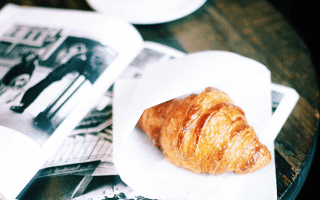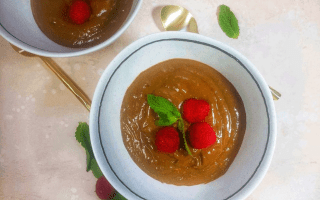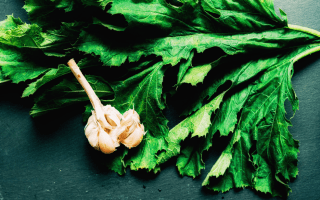If you’ve ever been overwhelmed by the abundance of cutting board choices, you’re not alone. We’ve been there, too. There are so many things to consider and so many decisions to make. Which material functions best? Are toxins a concern? How about durability? Does a higher price equal a better product? We help answer these questions and share our findings on proper cutting board maintenance. This article goes at length because there’s a lot to consider. If you prefer a synopsis, the most popular cutting board material is plastic. However, the best cutting boards are made from wood.
For millennia, all cutting boards were wood
Introduced in the 1970s, plastic cutting boards caught on quickly. Everyone, including the United States Department of Agriculture (USDA), believed they were the “safer” choice without any actual evidence or research. The thought process being that raw meat juices absorb easily into wood. Plastic cutting boards, on the other hand, are non-porous and dishwasher-friendly. They are also so much cheaper, cementing their popularity even today.
But, then something unexpected happened
In 1993, two microbiologists at the University of Wisconsin’s Food Research Institute, Dean O. Cliver and Nese O. Ak, wanted to find a way to make porous wood cutting boards as “safe” as non-porous plastic boards. “Much to their surprise, they found that when boards were purposely contaminated with organisms like Salmonella, Listeria and Escherichia coli that are common causes of food poisoning, 99.9 percent of the bacteria died off within three minutes on the wooden boards, while none died on the plastic ones” (1). Their research revealed additional interesting findings. Households using plastic or glass cutting boards “were about twice as likely as average to contract salmonellosis” (2). Furthermore, Cliver discovered that new wood cutting boards performed similarly to used wood cutting boards in terms of antimicrobial properties. But, new plastic cutting boards outperformed used plastic cutting boards (3).
Why are new wood cutting boards comparable to used ones?
Wood cutting boards have two properties unique to wood. All cutting boards suffer knife scars. However, wood has some self-healing capabilities. So, knife marks don’t remain, as they do on a plastic board. Its second unique property is its antimicrobial ability to soak up liquid and bacteria along with it. Bacteria drawn into the cutting board no longer remains on the surface. In other words, wood cutting boards hold all the contaminants inside and away from the surface. When the cutting board dries, the bacteria also dry out and die. If you were to cut a newly contaminated wood cutting board open, you would find bacteria inside the cutting board. Furthermore, new wood boards have the same capabilities as used boards. And, they typically last decades if well-maintained.
Why do new plastic cutting boards perform better than used boards?
On a new plastic cutting board, bacteria remains on the surface. If adequately cleaned, the board would again be sanitary. But, if left alone in a humid environment that doesn’t allow the board to completely dry, bacteria multiply over time. Now consider what happens to a plastic cutting board when it sustains a scar, and the cut remains. Over time, the number of scores increases, and some get deeper, creating more surface area to house bacteria. You can place plastic cutting boards in a dishwasher to sanitize, but this does not happen often enough. Also, the practice does not kill all bacteria, especially deep within the board. Plastic boards can also release bacteria hiding within their cuts. For these reasons, plastic cutting boards should be replaced at least every year and more often with frequent use. And because plastic cutting boards don’t biodegrade like wood, but still need to be replaced routinely, they’re also bad for the environment and aren’t considered sustainable.
How to choose a wood cutting board
For wood cutting boards, concern over BPA or micro-plastics isn’t an issue. The toxins you want to keep an eye out for are in the glue, oil, wax or varnish. It’s hard to know if the glue used to hold together a pieced cutting board is entirely toxin-free or not. So, unless you trust the manufacturer, it’s best to choose a board that is one solid piece of wood. Although many chefs prefer end-grain cutting boards because they are better for knife preservation, these boards tend to have the most seams and use the most glue. Oil and wax are enough to maintain a wood cutting board. Cutting boards with varnish are for decoration and not food preparation. Hard maple, beech and hinoki are are all anecdotally recommended for cutting boards. The study cited above tested more than 10 different woods and they all performed similarly.
A high-quality wood cutting board is an investment. They can last decades when properly maintained. However, a high price tag doesn’t necessarily mean you’ll get a high-quality board. Wood is a natural material, so even high-quality manufacturers can sometimes make faulty cutting boards unknowingly. Wood can sometimes behave unpredictably. If you want more details on what to look for in a quality cutting board, Serious Eats tested some boards and provide this guide. For your convenience, we also linked the hinoki wood one we use in our Curated Picks below.
Are wood cutting boards hard to maintain?
Like anything new that you are first learning, it seems like a lot more work when you read about it. However, it’s more about changing the way you do things than adding more work in practice. For example, it’s best to wash both plastic and wood boards with soap and water immediately after use. However, with a wood cutting board, this is more important to remember. Wood is absorbent. While the bacteria it soaks up isn’t transferred to other foods or surfaces if adequately maintained. Odors and flavors do transfer to other ingredients you cut on the board. To prevent smell and flavor transfer, wash the board immediately after use and completely air dry. You can also sprinkle the board with salt. Take a lemon half, and scrub the salt all over the surface with the cut side down. Done periodically, this will also help to disinfect your board. Unlike other wood cutting boards that should be kept dry, you should wet a hinoki wood cutting board before use. A wet board will help keep it from absorbing smells and flavors, but like other wood cutting boards, it should never be submerged in water for any length of time.
Keep wood cutting boards dry, but not too dry
Plastic boards are dishwasher-friendly, but wood cutting boards, unless specified, are not. You don’t want a wood board to completely dry out and warp from the extreme heat of a dishwasher. An essential part of wood cutting board maintenance is to completely air dry between uses. To properly air dry, it needs to be wiped dry with a clean dish towel after washing and then placed standing up to air dry. Never place a wet board to dry on a dishtowel. It will mold instead.
But, it also needs to be moisturized to sustain the integrity of the wood. When the wood looks dry or ashy, it requires some oiling. We like to use fractionated organic coconut oil made for cutting boards because it does not go rancid and is safe to eat. You should not use cooking oil on wood cutting boards because they all go rancid over time. Some people follow up with wax after the oil is fully absorbed (1-2 hours or overnight), but this is extra pampering rather than an absolute necessity. A well oiled and waxed board is also less likely to stain. To apply the oil:
- Pour a couple of teaspoons onto the cutting board surface. You may need more or less depending on your cutting board’s size.
- Take a small towel, muslin or cheesecloth and rub the oil all over the board until there is a thin, even layer everywhere, including the sides and bottom.
- Place the board on a rack and allow the oil to absorb completely.
You can do this once a month or as needed. However, some people do this once a year. For a brand new cutting board, wash with soap and warm water and let dry completely. Then follow the steps above for oil application a couple times before first use. To apply wax, the process is the same as oil but use wax.
Some additional helpful tips
Consider owning more than one wood cutting board, although it’s not mandatory. There are two reasons for this recommendation. If you recall from the research above, bacteria cannot survive without water. Because of this, it’s good practice to give your cutting board enough time to air dry completely before subsequent use. The second reason is that it’s also a good idea to designate a different board for different foods to prevent cross-contamination. For example, you can prepare raw meats and fruits/vegetables on separately assigned boards. Or, you can have a cutting board dedicated to smelly foods (garlic and onions) and one for no-cook foods (fruit and cheese).
A final helpful tip is to scrub down your cutting board with a brush, soap and room temperature water after cutting raw meat on it. Hot water will cook the meat left on your cutting board and bond it to the board. The meat pieces are much easier to scrub off if you use room temperature water first and rinse with warm water afterward, if desired.
In case you’re wondering how glass, marble, and stainless steel fare, these materials are very harsh on knives and should only be used as decorative boards and serving platters. Rubber cutting boards perform similarly to plastic.
Read more posts about Parenthood where we discuss all things related to life as a parent.
At Such Is Motherhood, our curated picks are always independently selected. When you buy something through our affiliate links, we may earn a small commission. This does not affect the price you pay and helps us cover the cost of running this site. Sometimes, we provide links solely for your convenience, for which we won’t receive any compensation. Our goal is only to suggest the most notable products. Listed prices may change after publication. See full policy.
Curated Picks
Kiso: These cutting boards are the gold standard for sustainability and being toxin-free. Kiso makes this particular board from a single solid piece of raw, sustainably harvested hinoki wood. So, there are no glues or varnishes to worry about. Hinoki wood from Japan is prized for its durability, antimicrobial properties and ability to preserve sharp knives.
Clark’s: This cutting board oil and wax duo supplies everything you need to maintain a wood cutting board properly. The oil contains 100% fractionated coconut oil. It applies easily and will not go rancid over time. The wax is made of fractionated coconut oil, plus beeswax and carnauba wax. Both of these do not contain mineral oil and keep any wood cutting board looking like new.
Clark’s: This scrub brush fits perfectly in your hand and removes stuck on residue with ease. It also works well for cast iron pans and other dishes.
What do these icons mean?
Publications
(1) Brody, Jane E. “Wooden Cutting Boards Found Safer Than Plastic.” The New York Times, The New York Times, 10 Feb. 1993, www.nytimes.com/1993/02/10/health/wooden-cutting-boards-found-safer-than-plastic.html.
(2) Cliver, Dean O. UC-Davis Food Safety Laboratory: Cutting Board Research, faculty.vetmed.ucdavis.edu:80/faculty/docliver/Research/cuttingboard.htm.
(3) AK, Nese O., et al. “Cutting Boards of Plastic and Wood Contaminated Experimentally with Bacteria .” Treenshop, Journal of Food Protection, Jan. 1994, www.treenshop.com/Treenshop/ArticlesPages/SafetyOfCuttingBoards_Article/CliverArticle.pdf.






